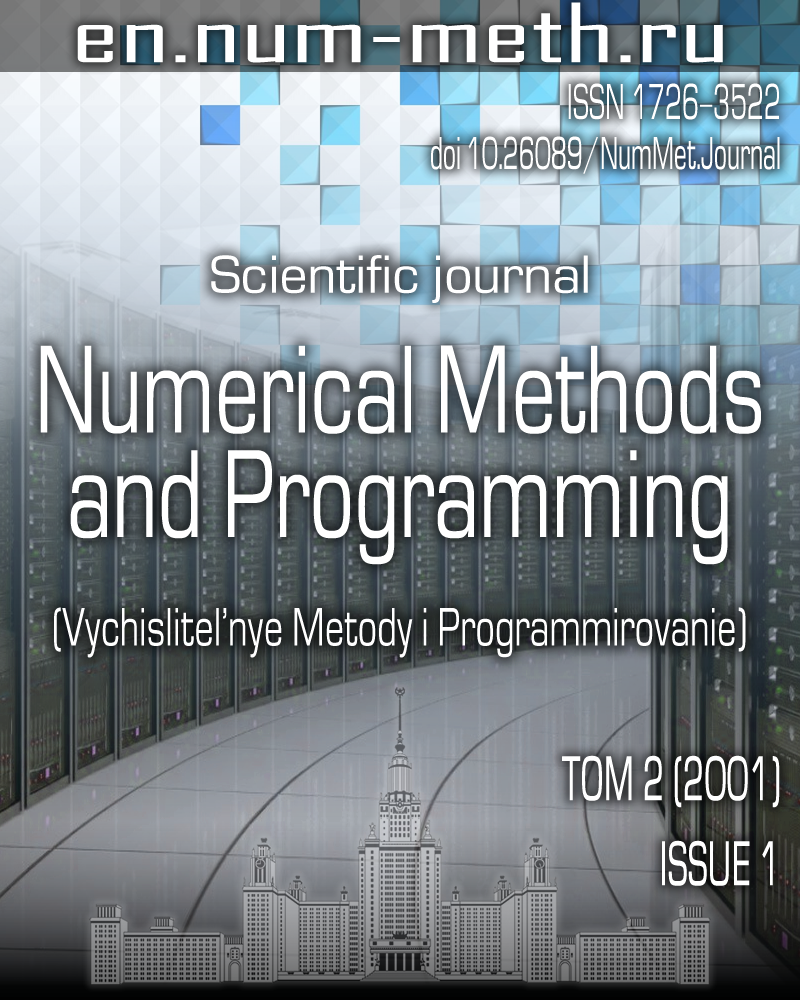Software architecture modeling
Keywords:
программная архитектура
программная инженерия
методы анализа и проектирования
архитектурные образцы
структуризация программ
Abstract
Software architecture modeling is considered. This paper contains the software architecture definition, the goals of its application to the software development. Existing software architecture modeling approaches and formal methods of analysis and design are discussed; further perspectives of software architecture modeling researches are outlined.
References
- Spencer D. Webster’s new world dictionary of computer terms. New York: Prentice Hall, 1993.
- Shaw M., Garlan D. Software architecture. London: Prentice-Hall, 1996.
- Perry D.E., Wolf A.L. Foundations for the study of software architecture // ACM SIGSOFT Software Engineering Notes. 1992. 17, N 4. 40-52.
- What is software architecture? URL: http://www.sei.cmu.edu/architecture/definitions.html, Carnegie-Mellon University.
- Garlan D., Shaw M. An introduction to software architecture // Advances in Software Engineering and Knowledge Engineering. Vol. 2, 1-39. Singapore: World Scientific Publishing Company, 1993.
- Философский словарь/ Под ред. И.Т. Фролова. М.: Политиздат, 1980.
- Bass L., Clements P., Kazman R. Software architecture in practice. Reading: Addison Wesley, 1998.
- Morris C.R., Ferguson C.H. How architecture wins technology wars // Harvard Business Review. 1993. 86-96.
- Clements P.C., Northrop L.M. Software architecture: an executive overview. Technical Report CMU/SEI-96-TR-003, ESC-TR-96-003. Pittsburgh, 1996.
- Budgen D. Software design. Reading: Addison-Wesley, 1994.
- Kruchten P.B. The 4+1 view model of architecture // IEEE Software. 1995. 12, N 6. 42-50.
- Shaw M., Garlan D. Formulations and formalisms in software architecture // Computer Science Today. 1995. N 1000. 307-323.
- Bachmann F., Bass L., Chastek G, Donohoe P., Peruzzi F. The architecture based design method. Technical Report CMU/SEI-2000-TR-001, ESC-TR-2000-001. Pittsburgh, 2000.
- Jacobson I., Booch G., Rumbaugh J. The unified software development process. Reading: Addison Wesley, 1999.
- Kruchten P. The rational unified process: an introduction. Reading: Addison Wesley, 1999.
- Grady R.B. Practical software metrics for project management and process improvement. London: Prentice Hall, 1992.
- OMG Unified Modeling Language specification. Version 1.3. June 1999. http://www.omg.org
- Booch G., Rumbaugh J., Jacobson I. The Unified Modeling Language User Guide. Reading: Addison Wesley, 1999.
- Medvidovic N. A classification and comparison framework for software architecture description languages. Technical Report UCI-ICS-97-02. Irvine, 1996.
- Allen R.J. A formal approach to software architecture: Thesis, Pittsburgh, 1997.
- Gamma E., Helm R., Johnson R., Vlisssides J. Design patterns: elements of reusable object-oriented software. Reading: Addison Wesley, 1995.
- Garlan D., Monroe R., Wile D. Acme: an architecture description interchange language // Proceeding of CASCON’97, pp. 169-183. Toronto, 1997.
- Vaskevitch D. Client/server strategies. A survival guide for corporate reengineers. Foster City: IDG Books Worldwide, 1995.
- Robbins J.E., Medvidovic N., Redmiles D.F., Rosenblum D.S. Integrated architecture description languages with a standard design method. University of California, Irvine, 1997.
- Egyed A. Integrated architectural views in UML. Technical Report USC/CSE-99-TR-514. Los Angeles, 1999.
- Hoque R. CORBA 3 developer’s guide. Foster City: IDG Books Worldwide, 1998.
- Orfali R., Harkey D. Client/server programming with Java and CORBA. New York: John Wiley & Sons, 1998.
- Хомяков Д.М., Хомяков П.М. Основы системного анализа. М.: Изд-во механико- математического факультета МГУ, 1996.
- Orfali R., Harkey D., Edwards J. The essential distributed objects. New York: Wiley Computer Publishing, 1996.
- Wermelinger M. Specification, testing and analysis of (dynamic) software architecture with the chemical abstract machine. Departamento de Infomatica, Universidade Nova de Lisboa, Portugal, 1998.
- Abowd G., Allen R., Gralan D. Formalizing style to understand descriptions of software architecture. Technical Report CMU-CS-95-111. Pittsburgh, 1995.
- Moriconi M., Qian X., Riemenschneider R. Correct architecture refinement // IEEE Transactions on Software Engineering. 1995. 21, N 4. 356-372.
- Spivey J.M. The Z-notation: a reference manual. London: Prentice Hall, 1992.
- Murphy G.C., Notkin D., Sullivan K. Software reflexion models: bridging the gap between source and high-level models // Proceedings of the Third ACM SIGSOFT Symposium on the Foundations. 18-28. Washington, 1995.
- Брой M. Информатика. Часть 3. M.: Диалог-МИФИ, 1996.
- Gacek C. Detecting architectural mismatches during systems composition: Thesis. Los Angeles, 1998.
- Collofello J.S. Introduction to software verification and validation. SE Curriculum Module SEI-CM-13-1.1. Pittsburgh, 1988.

